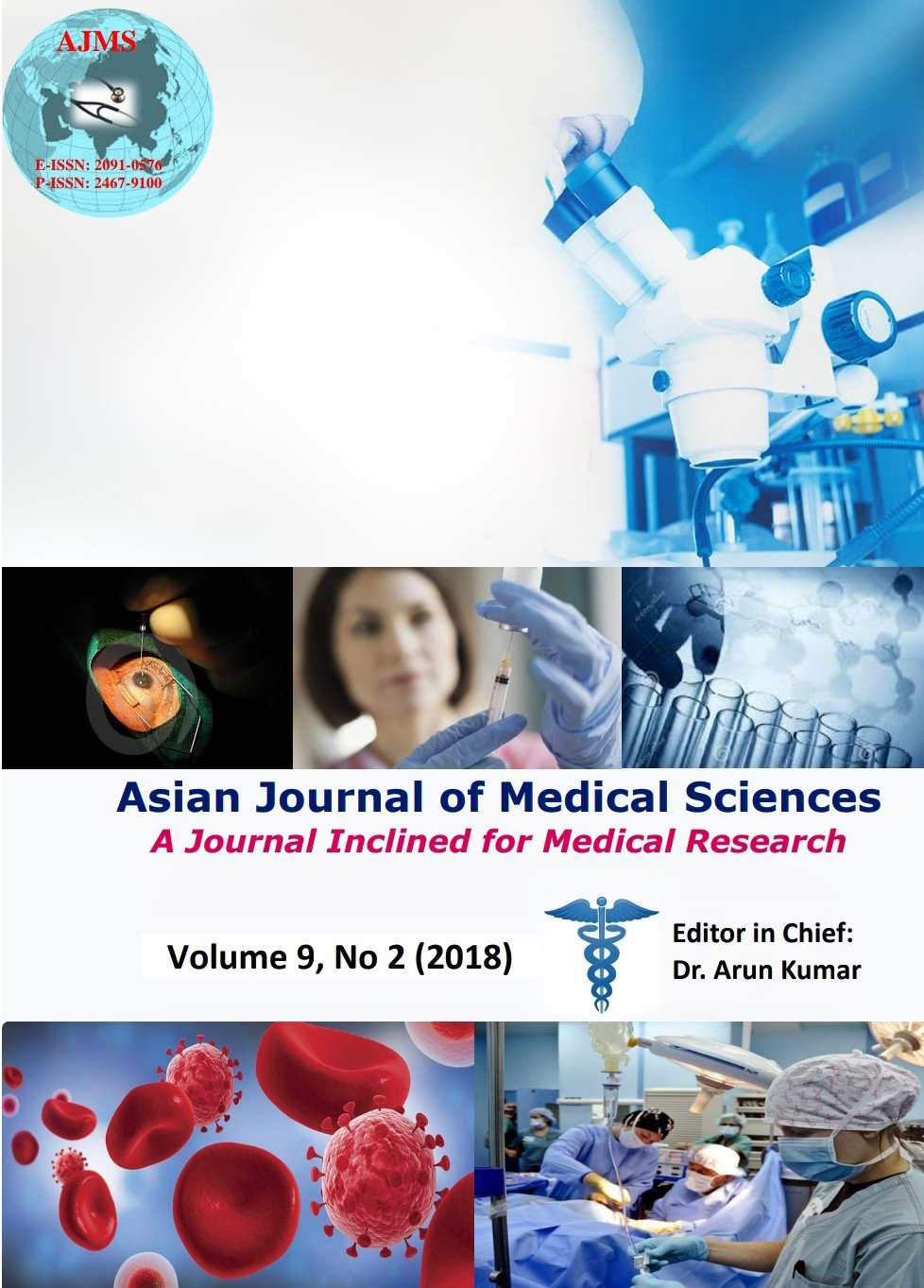Ceruloplasmin, a potential marker for glycemic status and its relationship with lipid profile in Type II diabetes mellitus
Keywords:
Type II DM, Ceruloplasmin, lipid profile, lipid ratioAbstract
Background: Type II Diabetes Mellitus (Type II DM) is a metabolic disorder characterized by glucotoxicity and lipotoxicity. Marker of glycemic control are HbA1c, fasting blood glucose and postprandial blood glucose. There is altered lipid parameters in Type II DM which possess significant cardiovascular risk to the patient. Recent studies have shown that ceruloplasmin, an inflammatory marker having antioxidant property,is ideal marker to know the cardiovascular status, degree of insulin resistance and cancer risk.
Aims and Objectives: Present study was carried out to determine the relation between glycemic status and serum ceruloplasmin along with lipid parameters which reflects the cardiovascular status in these patients.
Materials and Methods: Blood samples were collected from eighty-eight patients with type II diabetes mellitus along with age and sex matched forty-two healthy controls. Fasting lipid profile and blood glucose, postprandial blood glucose, serum ceruloplasmin and HbA1c levels were determined using auto analyser in the department of clinical biochemistry in Institute of Medicine.Appropriate tests of significance were computed by SPSS version 20.
Results: Serum ceruloplasmin was found higher in type II DM than non-diabetic group, median 52.0 (95% CI: 49-53) mg/dl versus median 45.0 (95% CI: 41-47) mg/dl, at significant level of 0.001 probability test. Similarly, fasting blood glucose, post prandial glucose, HbA1c and TG/HDL cholesterol ratio correlated significantly with serum ceruloplasmin.The cut off value of 46.5 mg/dL was obtained for serum ceruloplasmin with sensitivity of 87.5% and specificity of 62% which has good discriminating value for type II diabetic patients versus non-diabetic patients.
Conclusion: Findings in our study shows that increased glycation coupled with altered lipid profile in type II DM causes enhanced generation of ceruloplasmin which could be used as potential marker for identifying acceleratedglycation and atherogenesis in these subjects.
Asian Journal of Medical Sciences Vol.9(2) 2018 13-18
Downloads
Downloads
Published
How to Cite
Issue
Section
License
Authors who publish with this journal agree to the following terms:
- The journal holds copyright and publishes the work under a Creative Commons CC-BY-NC license that permits use, distribution and reprduction in any medium, provided the original work is properly cited and is not used for commercial purposes. The journal should be recognised as the original publisher of this work.
- Authors are able to enter into separate, additional contractual arrangements for the non-exclusive distribution of the journal's published version of the work (e.g., post it to an institutional repository or publish it in a book), with an acknowledgement of its initial publication in this journal.
- Authors are permitted and encouraged to post their work online (e.g., in institutional repositories or on their website) prior to and during the submission process, as it can lead to productive exchanges, as well as earlier and greater citation of published work (See The Effect of Open Access).




